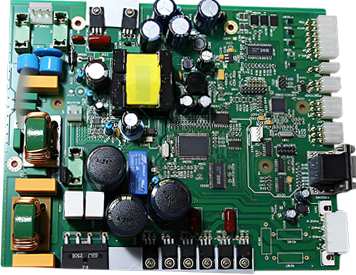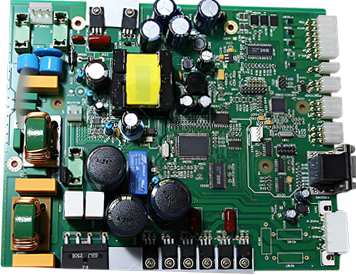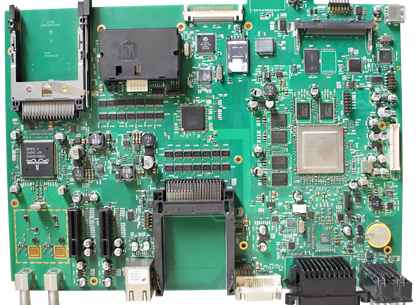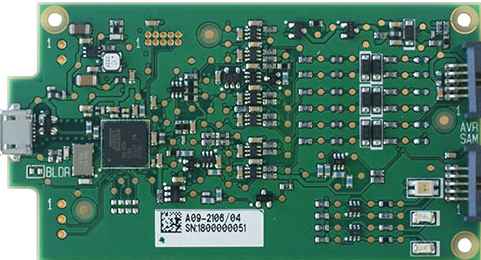
Three types of switching power buffer circuits
1. What is switching power buffer circuit?
Buffer circuit is also called absorption circuit, it is an important protection circuit of power electronic equipment. It is composed of inductors, capacitors, resistors, power switches and so on, which can protect the normal operation of the circuit. Buffer circuits come in many forms and can be divided into various categories according to different classification criteria to accommodate different types of switching power supplies.
According to the action time of the buffer circuit, it can be divided into off buffer circuit and on buffer circuit. The switch-off buffer circuit can absorb the switch-off overvoltage or reverse overvoltage to reduce the switch-off power loss, while the switch-off buffer circuit is used to suppress the current when switching on the power supply. If two buffer circuits are combined, it will form a composite buffer circuit.
Passive and active buffering circuits are classified according to component type. Active buffer circuit contains more components and its structure is relatively complex. Passive buffer circuits have no control and drive circuits, and have a simpler structure and are widely used.
From the point of view of whether the buffer circuit produces loss, it can be divided into lossy circuit and lossless circuit. There are many classifications of buffer circuits, and it is necessary to determine their practical use.
1.1 Necessity and function of switching power buffer circuit
There are two ways to avoid this. One approach is to reduce the parasitic capacitance in the switching converter. Another method is to add a buffer circuit to the circuit to slow down the current or voltage to reduce damage caused by overheating of the switching power supply. Compared with the previous method, adding buffer circuit is more economical and feasible. The function of buffer circuit is realized by improving the switching path of power semiconductor devices. It can restrain the overvoltage and overcurrent of switching power supply, reduce the loss of switching power supply, and ensure the safe and reliable operation of switching power supply.
1.2 The basic idea of designing buffer circuit of switching power supply
There are many design forms of buffer circuit of switching power supply, but its basic idea is to try to make the anode current of switching power supply rise slowly when on, and anode voltage rise slowly when off, so as to reduce the power loss in the process of switching. Therefore, the switch thyristor is not affected by both overcurrent and overvoltage during the process of thyristor switching on and off, which can lead to device overheating and eventual damage.
By taking advantage of the fact that the inductor current does not change suddenly, the buffer circuit can suppress the current increase rate, so as to make the anode current of the switching power supply rise slowly when the device is switched on. The fact that the capacitor voltage cannot change suddenly is used to control the rise rate of the device voltage so that the anode voltage rises slowly when the device is turned off.
2. Type of switching power buffer circuit
Three types of switching power buffer circuits
The RCD buffer circuit consists of resistor (Rs), capacitor (Cs) and diode (VDs). Resistors (Rs) and diodes (VDs) can be connected in series or parallel. Its main function is to suppress the overvoltage generated when the device is turned off and limit du/dt to reduce the shutdown loss of the device. ?
When the RCD buffer circuit turns off the switching power supply, the load current is diverted as it flows through the resistors (Rs) and capacitors (Cs), thus reducing the current in the circuit. In addition, the energy stored in the parasitic inductance can be charged by the parasitic capacitor in the switching power supply, so that the switching voltage slowly rises. When the voltage on the parasitic inductor and the parasitic capacitor are the same, the absorbing diode VDs will be switched on, thus keeping the switching voltage at about 1 volt. ?
At the same time, the parasitic inductor can also charge the capacitor, so that when the switch is on, it can absorb the capacitor to charge the resistor Rs. Resistor Rs plays a role in suppressing discharge current. After some time, the voltage at both ends of the capacitor is close to zero, ready to cut off the power. RCD buffer circuit can reduce the voltage stress in switching power supply, so as to achieve the purpose of circuit protection. It is the simplest buffer circuit with the lowest cost, so it has been widely used. However, the clamp voltage of the buffer circuit will vary with the load of the circuit. If the buffer parameters are not reasonably determined, the buffer circuit will not achieve the desired effect, and the switching power supply will be destroyed.
Three types of switching power buffer circuits https://www.kingfordpcb.com/yuan.php
https://www.kingfordpcb.com/yuan.php
The LCD buffer circuit consists of inductors Lr, capacitors Cs, Cr and diodes VD1, VD2, VD3. Since LCD buffering does not use active devices and contains no energy-consuming components, it produces almost no loss and is therefore also known as passive lossless buffering.
The function of LCD buffer circuit is to reduce the current and voltage rise rate of the main switch tube, starting from zero, make the switch tube work in the quasi-zero current on and quasi-zero voltage off state, and reduce the loss in the switching process. There are many common methods for LCD buffer circuits. One is to connect the inductor with the switching tube in series, so that when the switching power supply is switched on, the current in the loop can only increase from zero, so as to protect the circuit and reduce the loss. Capacitors can also be connected in parallel with the switching tube, so that the voltage at both ends of the tube can only slowly rise from zero when switching power supplies, so there is no immediate overvoltage when the circuit is closed, thus achieving the effect of buffering. The structure of LCD buffer circuit is as simple as RCD buffer circuit, but it has more advantages than RCD buffer circuit. It has high buffering efficiency, small electromagnetic interference to the circuit, low cost, good performance and high reliability.
Three types of switching power buffer circuits
The absorbed energy of the energy absorption buffer circuit can be fed back directly or indirectly to the DC power supply and load without any controlled switching device and associated control circuits. It has the function of controlling and improving the working track of the switching device, making it located in the forward and reverse safe working area, reducing the switching loss and electromagnetic noise of the power device, and improving the over current and over voltage capability of the switching device. The equipment. When the switching power supply is switched on, the parasitic capacitance (Cs) can be discharged through the diode, the transmission capacitance (Co) and the switching absorber Part of the energy on the Cs can be fed back to the switching power supply through diodes, transformers, etresonant circuit.c., thus reducing the peak resonant current and playing a role in protecting the circuit. When the switching power supply is disconnected, most of the energy in the inductor Ls can be transferred to the capacitor, while only a small amount is fed back to the power supply. Therefore, there is no large surge voltage on the switch tube, and it is effectively clamped to reduce the stress on the switch tube. Although the structure of energy regenerative buffer circuit is more complex, compared with other buffer circuits, it can ensure the stable and efficient operation of high-power equipment.
With the development of power electronics, switching power supplies tend to be smaller and lighter. And adding buffer circuit to the circuit can reduce the power burden in the process of device switching. Buffer circuit has now become an indispensable part of the circuit, and plays a vital role.









